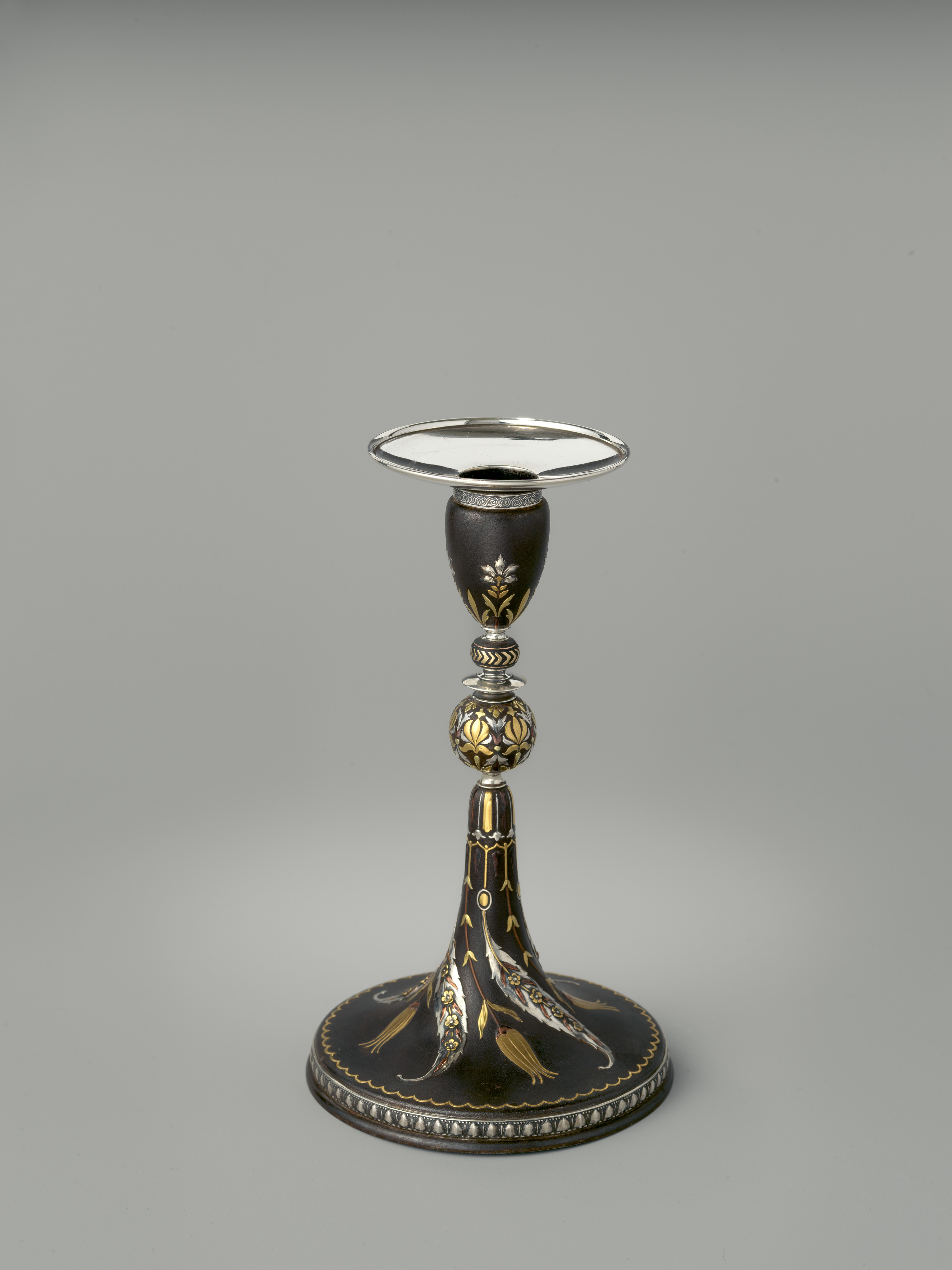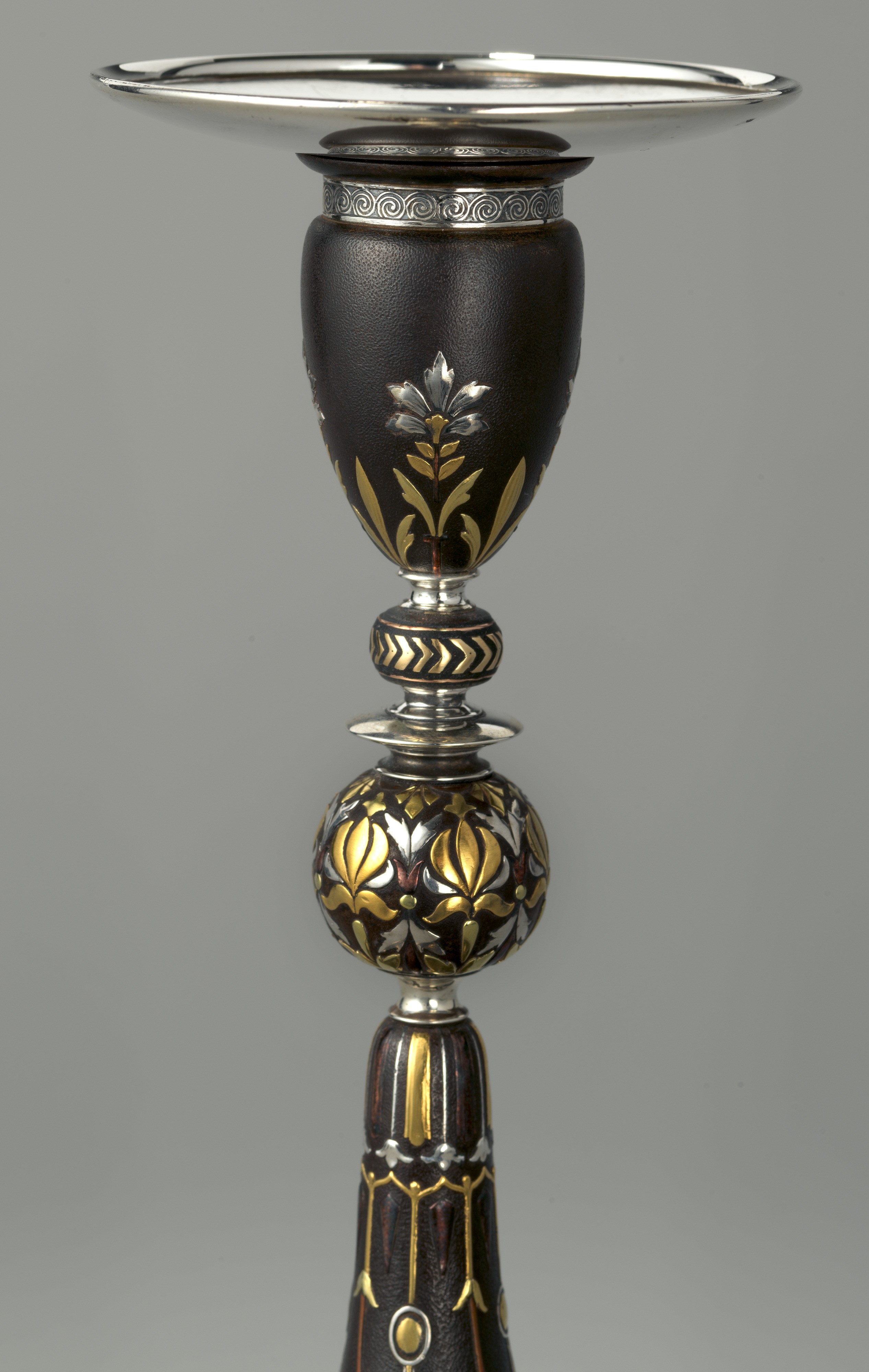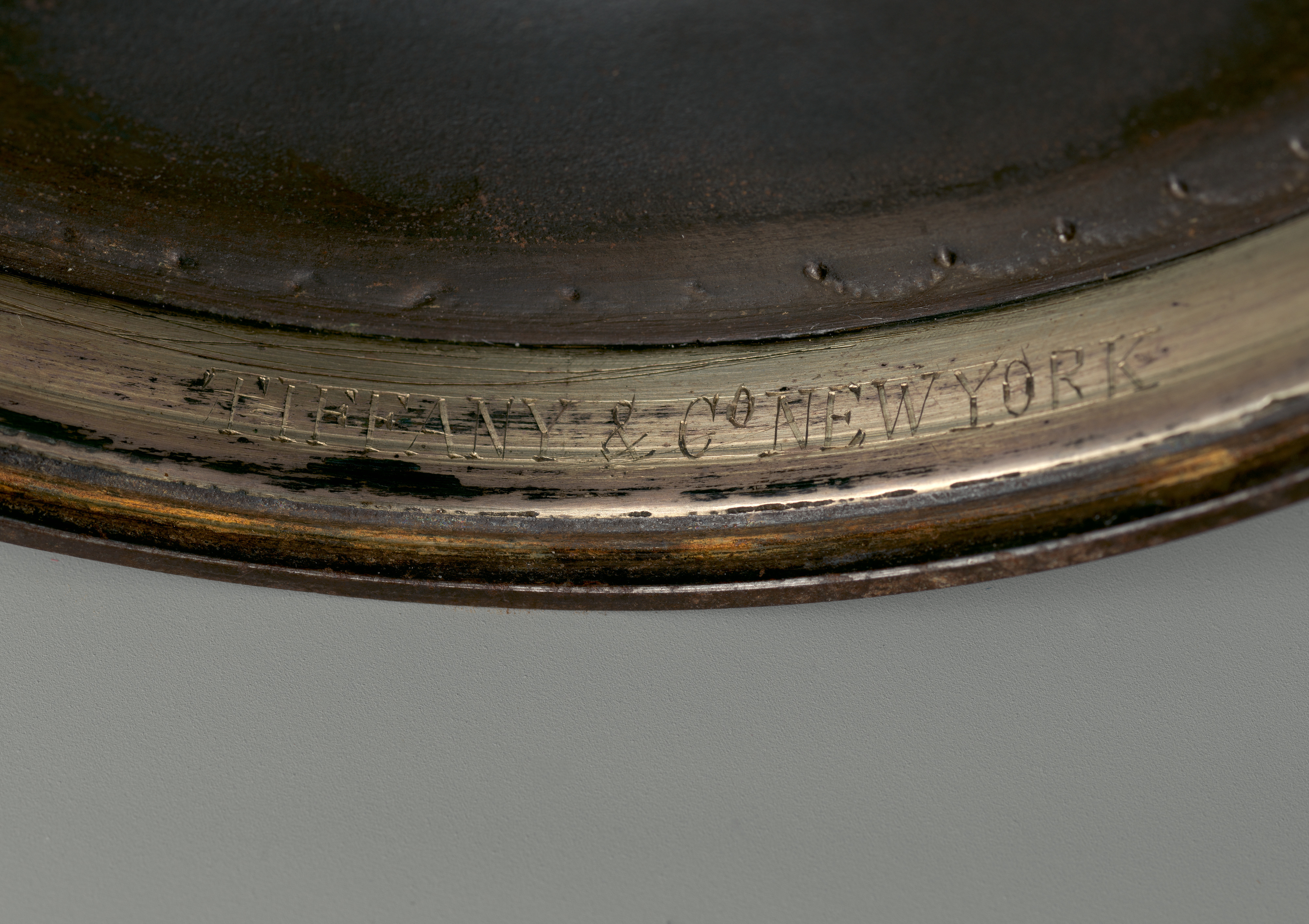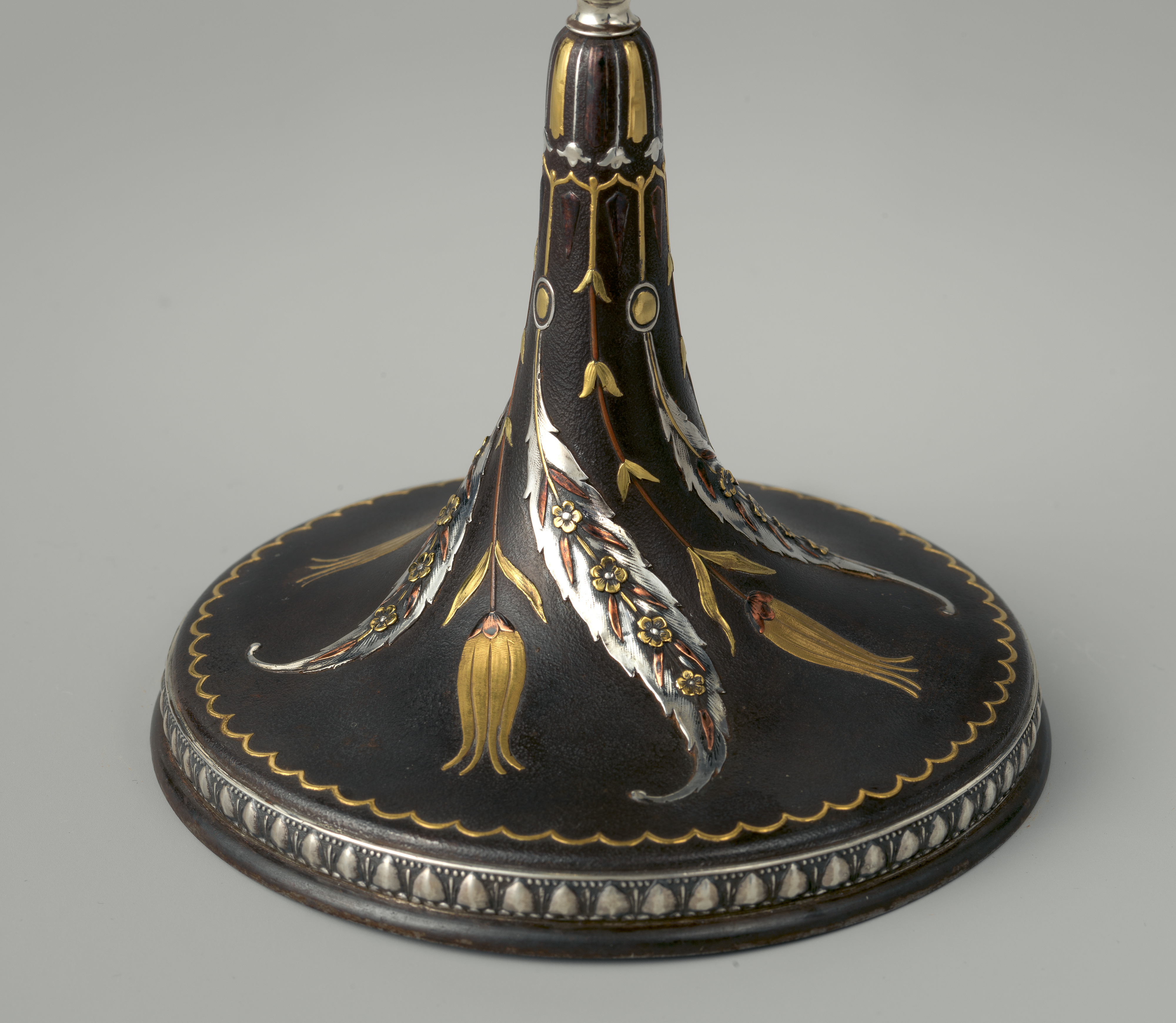Candlestick
Manufacturer Tiffany & Co.
These candlesticks exemplify the innovative designs and technical virtuosity that characterized Tiffany & Co.’s work during the 1870s and 1880s. Exhibited at the 1878 Paris Exposition Universelle (World’s Fair), the candlesticks evidence a sophisticated engagement with Islamic decorative vocabulary and design. Edward C. Moore, the director of Tiffany’s silver division during most of the second half of the nineteenth century, was a passionate and discerning collector of metalwork, glass, ceramics, and textiles from the Islamic world. His collections informed his creative vision, and these candlesticks reflect the fresh and original ways in which he and his designers and craftsmen responded to these sources of inspiration. A surviving diary of one of Tiffany’s leading designers, Charles Grosjean, documents the candlesticks as the first works he selected for inclusion in the firm’s display in Paris. Particularly striking and unusual for their use of iron, the candlesticks offer compelling supporting evidence for Tiffany’s declaration that their exhibition in Paris "has proved a success far greater than any one had expected…" and "is proof of the growth of our people in art knowledge and education." The acclaim Tiffany & Co. garnered at the fair propelled them to international prominence and prompted the British designer and critic Christopher Dresser to dub them "first silversmiths of the world."
Due to rights restrictions, this image cannot be enlarged, viewed at full screen, or downloaded.
This artwork is meant to be viewed from right to left. Scroll left to view more.







